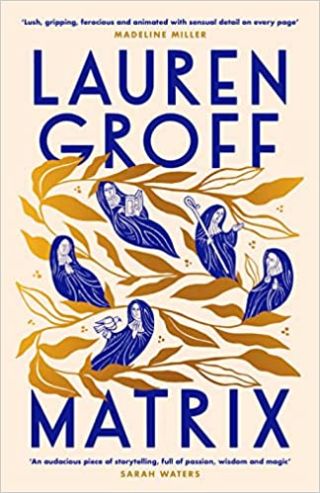Imagination
Movement Powers the Imagination
Interactions can make an unfamiliar environment easier to imagine.
Posted January 15, 2023 Reviewed by Jessica Schrader
Key points
- Imagining interactions with an unfamiliar environment can make an unknown place more accessible.
- Studying how a skilled fiction writer helps readers imagine a far-off place can help us understand how imagining minds work.
- In compelling stories as in human brains, action and perception feed each other.

The further a story lies from readers’ experiences, the harder a writer may have to work to create its story world in their imagination. Readers vary in their capacities to imagine and in the sensory memories that feed their imaginings, but a good writer can cause vastly different readers to conjure worlds unknown to them. How do writers do it? What do their narrators describe, and what do their characters see and do, that let readers experience far-off worlds with them? Writers “appeal to the senses,” as Flannery O’Connor put it—usually to several senses at once. And as literary characters perceive the world around them, those characters are often doing things. In compelling stories as in human brains, action and perception feed each other.
To see how a gifted writer immerses readers in a far-off world, one can do no better than study Lauren Groff’s Matrix (2021), where she helps readers imagine the life of a 12th-century nun. Expelled from Eleanor of Aquitaine’s court at 17, Marie must take charge of an impoverished abbey in England. Groff's novel follows Marie's transformation of the abbey from a muddy hell of starvation to a place where women can feed their bodies and minds. Groff conducted extensive research to write the novel, and she conveys her knowledge through the scents, sounds, and sights that Marie perceives. In one scene, Marie enjoys a ripe apricot from a tree that has grown from a seed she has planted:
“One night, Marie steals out to smell the apricots ripening. She takes a raw fruit in her hand to feel its weight, to marvel at the large and healthy tree that god compressed into a seed. But this fruit comes off its stem easily and its flesh has a little give to it like the firm thigh of a girl, and in the dark Marie rubs the soft down of the fruit upon her cheek and feels a thrill up the length of her skin."

To make Marie’s sensations immediate, Groff uses the present tense, as she does throughout the novel. All through this scene, Marie is moving, sneaking to the orchard, picking a fruit, and rubbing it against her face so that in a feedback loop, she is moving and feeling the results of her motions at the same time. Literary scholars Elaine Auyoung, Anežka Kuzmičová, and G. Gabrielle Starr have all commented on the key role of imagined motion in helping readers to blend senses. Auyoung points out how depicting characters performing simple acts such as grasping round objects can make scenes feel real to readers (Auyoung, 24). Kuzmičová proposes that describing an environment visually, then showing a character interacting with it can create a “flash of sensorimotor unity” for readers (Kuzmičová, 40). Starr argues that imagining motion can help readers mix different kinds of sensory information relevant to the movement involved (Starr, 80). Groff’s description of the apricot focuses on smell and touch, both surface touch and proprioceptive feedback that reveals Marie’s motions and bodily positions. Marie loves women, and she experiences the apricot in terms of other pleasures she has imagined. Together, her sensations and movements suggest the new world she is creating in the abbey, where it is no sin to enjoy a fruit from a tree you’ve planted yourself.
Throughout Matrix—the title refers to Marie’s maternal dominion; no red or blue pills here—Groff keeps readers grounded in Marie’s large, strong body. Changes in Marie’s bodily experiences make it possible to imagine her shifts in values and her growth in wisdom. When Marie undergoes menopause, she experiences hot flashes that will be familiar to 21st-century female readers over 50, but Marie comprehends and responds to them in a medieval way. As she plunges into a pond:
“Her body is inhabited, electric with heat, her skin has a roiling fire stuffed into it, the heat is unbearable, she is now running toward the low light off the water. Night in its heaps of darkness spins by. Off with the clogs and the stockings wet from night dew, and the mud cools her toes, the water is at her ankles, dragging hard at the hems, at knees at shame at belly so cool at chest and the arms, the wet wool pulling her body down."
Progressive change marks this passage as Marie runs into the water. She imagines herself possessed by heat; she calls her crotch “shame”; and she sheds woolen stockings and clogs. Although she thinks like a medieval woman, the sequence of her sensations makes her plunge imaginable to any broiling woman who has ever fought her way out of a jacket in an airline seat. Instead of saying that Marie is entering the water, Groff reports what Marie’s body parts feel, successively from her toes to her arms, as though the reader were a brain receiving feedback from these regions. As Marie immerses herself in water, her movement makes her sensations imaginable.
Because of the way Groff helps readers feel what Marie feels, scenes hard for 21st-century readers to imagine become some of the novel’s most vivid. A fighter herself, Marie teaches her nuns to fight, and when two dozen local men become jealous of the abbey’s prosperity and attack it, Marie leads her nuns into battle:
“On top of the abbey hill, Marie has set the nuns who can ride astride on the ten horses. Six had been huntresses in their earlier lives and can use the bows and arrows they hold; those who can ride but can’t shoot hold scythes. … Marie looks behind her as she rides into the forest and sees that with the moon shining at their backs, the nuns on horses are huge and black in silhouette and their shadows paint the hill in terrifying shapes."
In this moving image of 10 warrior nuns, Groff appeals to readers to imagine vision and touch together; not just to see the mounted nuns, but, cued by the repeated word “hold,” to imagine gripping a bow or a scythe in their own hands. Visually, Groff uses two techniques that literary scholar Elaine Scarry has identified as crucial for engaging readers’ visual imaginations: describing patterns of reflected light, and depicting shadows moving across background surfaces so that those surfaces seem comparatively more solid (Scarry 12, 22). To confront the modern prejudice that nuns don’t fight, Groff uses readers’ identification with Marie, which by this point in the novel may be strong. To Marie, the women warriors look huge and powerful in the moonlight. If readers can imagine them as Marie sees them, her nuns become a formidable force.
In all three scenes and throughout Groff’s present-tense narrative, Marie and her nuns are active. They harvest grain, help sheep give birth, and build a labyrinth and a floodgate. Groff’s years of research come through in the sensations of women’s everyday lives, and in the emotions these sensations make it possible to imagine. Picturing bodies moving, interacting with a strange but palpable environment, can open a past world to a reader.
References
Auyoung, E. (2018). When Fiction Feels Real: Representation and the Reading Mind. New York: Oxford University Press.
Groff, L. (2021). Matrix. London: Penguin-Random House.
Kuzmičová, A. (2012). “Presence in the Reading of Literary Narrative: A Case for Motor Enactment.” Semiotica 189 (1-4), 23-48.
O’Connor, F. (1969). “The Nature and Aim of Fiction.” Mystery and Manners. Edited by Sally and Robert Fitzgerald. New York: Farrar, Strauss, Giroux.
Scarry, E. (1999). Dreaming by the Book. New York: Farrar, Strauss, Giroux.
Starr, G. G. (2013). Feeling Beauty: The Neuroscience of Aesthetic Experience. Cambridge, MA: MIT Press.




